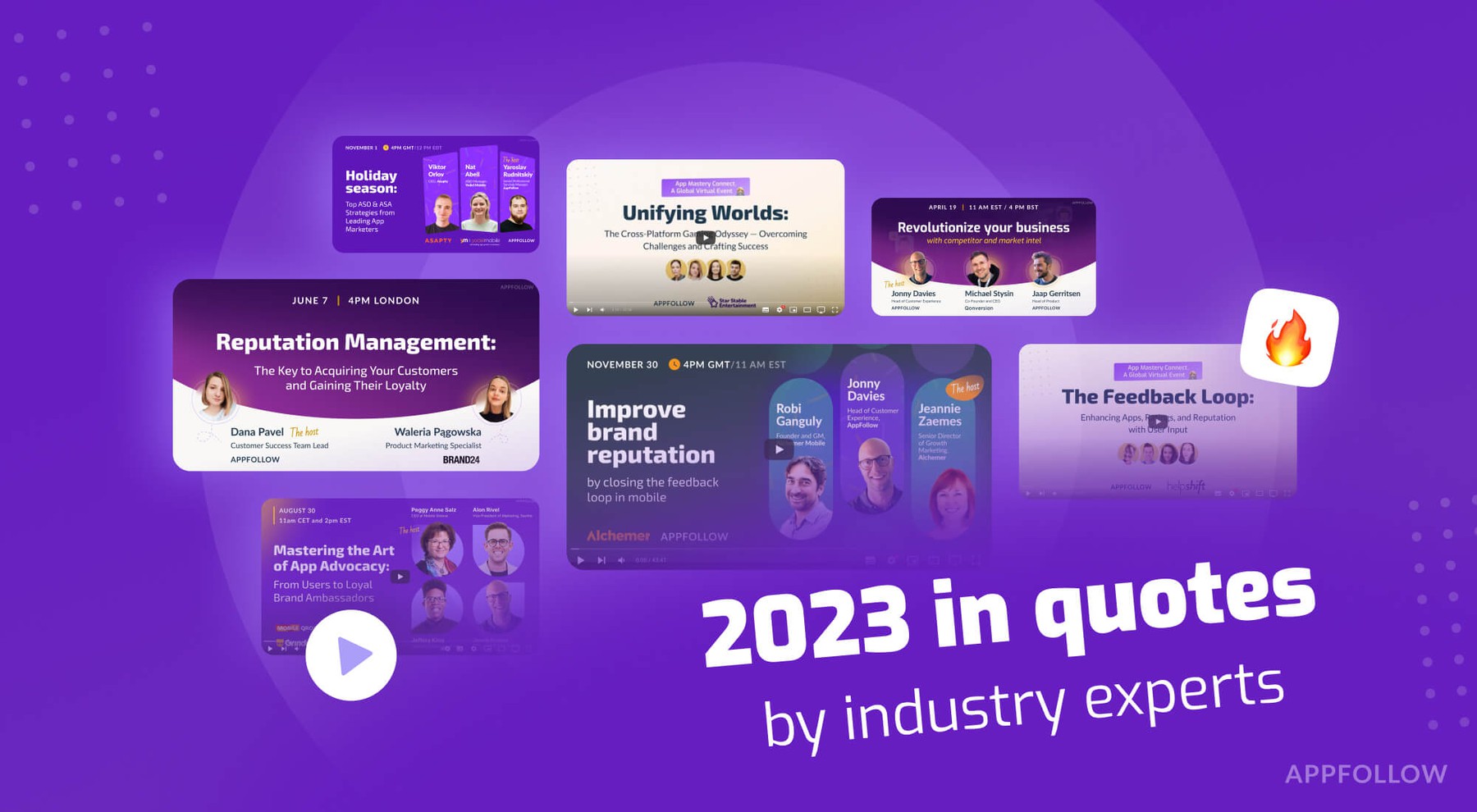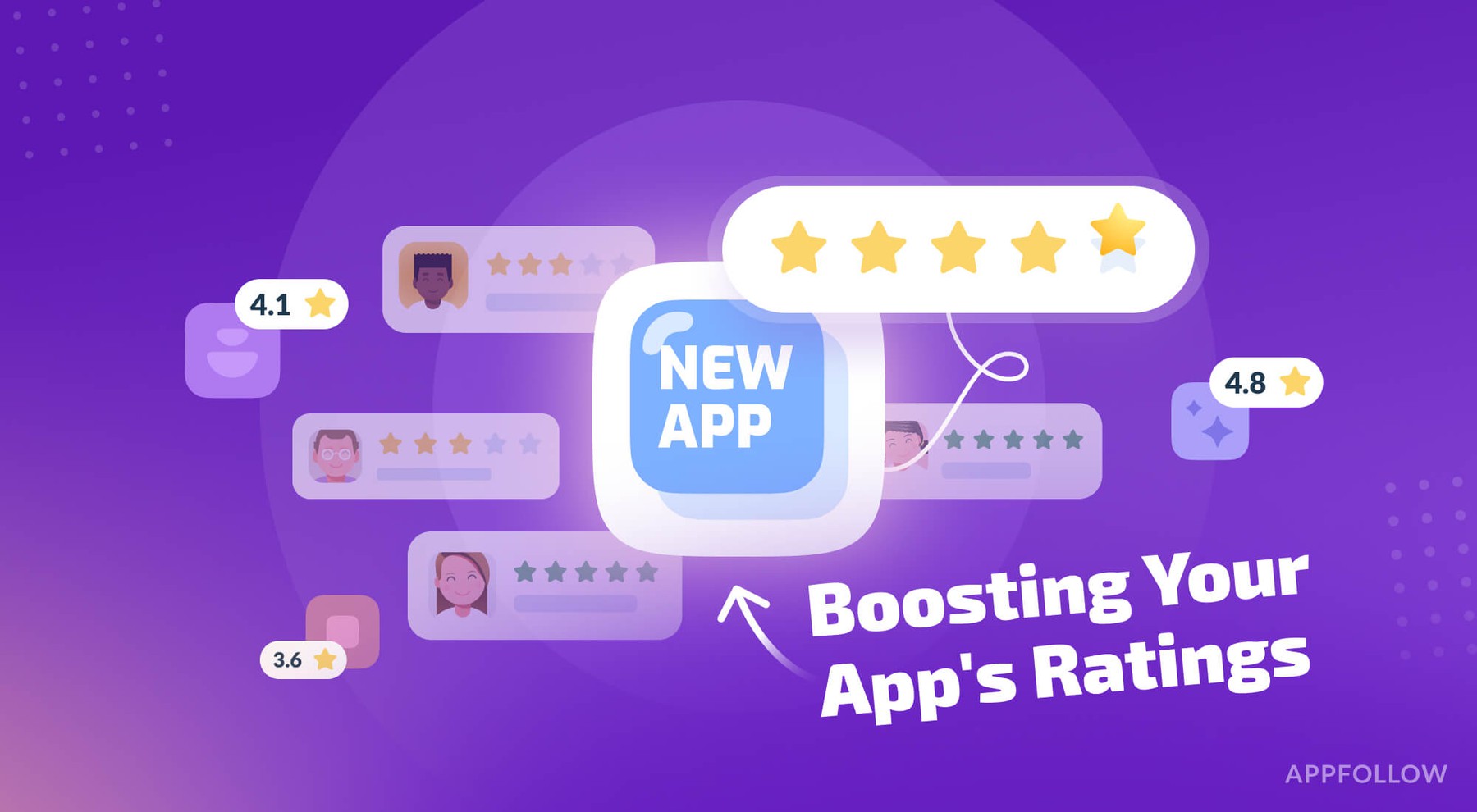Webinar recap: how responding to customer feedback drives revenue

Table of Content:
During our recently held webinar, How Responding to Customer Feedback Drives Revenue, we shared a ton of insights. Karen Taborda, Customer Growth Team Lead at AppFollow, Jeannie Zaemes, Senior Director of Growth and Demand Marketing at Alchemer, and Robi Ganguly, Founder and GM of Alchemer Mobile brought their intense knowledge to the table.
See it for yourself here:
In this article, you’re getting the short version of this webinar and a whole host of actionable insights. Dig in, bon appeti.
On the importance of customer feedback
Customers are your first testers. They use your new stuff and tell you straight up if it sucks or rocks. Don't dodge the bad feedback—it's the best thing you can get to improve on.
Keep public feedback and private feedback separate. Publicly, show you're on it—positive or negative, people see you're active and it boosts your image. Privately, it’s all about trust. Deep issues belong in private chats where real trust is built, not on some forum.
Push for more private feedback through your app. This is where you fix things quietly and make users trust you even when you mess up. They'll stick around longer and keep coming back, which means more money for you.
Now, about improving your product—listen to what users complain about, even if it’s just a few of them. Smoothing out those kinks benefits everyone. A better product means more users, higher sales, and more money.
Innovation comes from using this feedback to introduce new digital experiences. Take banks and shops—they're going digital and ditching the old ways. That shift keeps you relevant and opens new doors.
Interpreting user review feedback the right way
Companies freak out over managing the massive amount of feedback, especially when switching from public to private channels because the feedback volume explodes. The trick is using tools like AppFollow to filter the feedback well.
Here's a pro tip: instead of wasting time on generic email surveys, pinpoint who really matters. For instance, focus on customers in your loyalty program who’ve recently bought something. Ask them specific questions to get clear, actionable answers. This targeted approach saves you from drowning in useless data and lets you quickly tackle real issues that affect your business.
Internally, stop just gathering feedback and start acting on it. Create a solid process where every new feature launch includes a feedback loop. This turns feedback from a random task into a core part of your operations, boosting everything from product development to marketing.
Tactics & KPIs to measure
Try "happy pathing". Here’s the breakdown—boost the visibility of positive user experiences (happy paths) in app reviews without any restrictions. For the unhappy customers (sad paths), go beyond the typical short app review limit and dig deeper with targeted surveys to fix their issues.
Split your customers into these happy and sad paths. This helps your teams—both customer service and product development—focus their efforts where they're needed most.
App reviews are fantastic; they’re direct, fast feedback. People are more likely to drop comments there than through formal support tickets, especially praise. If someone says they love your app but want something extra, take it seriously. Run "Ideas" file where you track user suggestions and their popularity. When an idea gets enough support, consider implementing it.
Using AppFollow
Use sentiment analysis to gauge feedback's impact. That way you can track the balance of negative and positive reviews—a clear score to work from. This helps pinpoint where the pain points are and address them directly.
For any company wanting to use feedback for growth, knowing these metrics is everything—you need to understand what users love and hate to make informed decisions.
AppFollow is a whole platform where customer segmentation is key. Here’s how it works: We gather feedback through product forums directly linked to our product team. This feedback influences which features get prioritized based on who’s asking—be it big-time strategic clients, mid-level ones, or the smaller guys who more or less handle things themselves.
When it comes to poor reviews—those one to three-star ones—you need to figure out why they were given. Address these issues with app improvements or new features. Let those critical users know what’s in the works and invite them to beta test. This not only makes them feel valued but also directly improves the product.
Tracking KPIs
The biggie is retention. Link your product initiatives directly to retention goals. Say, if you’ve got three big features to launch this year, all aimed at boosting retention, make sure the feedback for these is monitored closely. This approach ensures everyone is on the same page.
Using a platform like AppFollow, attach customer IDs to the feedback, which lets you track responses right down to the individual level. You can then analyze how feedback influences customer behavior over time through our API or by exporting data.
This method moves you from guessing games to informed decisions, making your business strategies more about data-driven insights and less about gut feelings. This structured approach not only refines your data analysis capabilities but also ensures you’re responding to the right customer feedback well.
Being active where it matters
Enhance your support systems. Aim to make self-service info so good, customers won’t need to call—just search, click, and solve.
Push the envelope with customer feedback. Keep building on your product relationships—dive deeper into surveys and improve customer service integration, even bringing in API connections like Zapier for smoother data handling.
Recognize the revenue connection. Not all get it, but tying feedback directly to revenue can bring forward best practices. Start making these connections clearer.
Leverage digital word of mouth. It’s not just old-school gossip anymore; it’s ratings, reviews, and ad comments. Use this to boost app downloads—visible, vocal customer satisfaction can sway potential users big time.
Afterword
To sum it all up, customer feedback is something you need to see fast, you need to respond to it, and get insights you can implement in your product. Doing it on your own is hard and time-consuming. Automate the hell out of it and enjoy being far ahead of the competition still stuck in the old ways.
FAQ
Is responding to customer feedback helpful for revenue growth?
Responding to customer feedback boosts revenue growth as it helps identify product flaws and opportunities for improvement. By doing it right, you get customer satisfaction and loyalty, which translates into increased sales and return customers.
How to respond to large volumes of app reviews?
You can manage large volumes of feedback by using tools like AppFollow to filter responses. Focus on targeted feedback from key customer segments, such as loyalty program members, to improve the process further.
How can I improve customer satisfaction based on feedback?
Segregate feedback to tailor responses, use sentiment analysis to gauge feedback impact, and invite critical reviewers to beta-test improvements. This approach ensures direct and relevant responses that enhance product quality and customer satisfaction.
Read also
- How much does reputation management cost? Less than losing customers.






